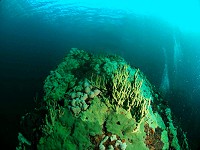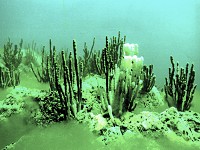| Origin & Development | |
|
Legends & Fairy tales • Earth's Crust Thickness • Underwater Relief • Landscapes • History & Formation • Seismic Activity • | |
| History of Lake Baikal | |
|
History of Explorations • Inhabitants & Settlers • First maps of Baikal • Archaeological Sites • | |
| Lake Baikal Climate | |
|
Introduction • Fogs • Winds & Waves • Ice Conditions • | |
| Fauna & Vegetation | |
|
Mammals • Baikal seal - Nerpa • Ichthyofauna • Invertebrates • Vegetation • | |
| Water of Lake Baikal | |
|
Colour • Transparency • Temperature • Pressure • Depth • Currents • Budget • Chemical Composition • Pollution • | |
| Recreational Areas | |
|
Circumbaikal Railway • Peschanaya Bays • Olkhon Island • Chivirkuysky Gulf • Wooden Irkutsk • Trans-Siberian Railway • | |
| People of Lake Baikal | |
|
People of Siberia • Buryat nation in Baikal • Russians in Baikal • | |
|
| |
Invertebrates of Lake Baikal
The systematic composition of invertebrate fauna of Baikal can not be considered finally defined. Annually tens of new species are described by experts in zoology (mainly - from the laboratory of hydrobiology and systematics of fresh-water invertebrates of Limnological Institute), unknown so far animals are discovered. Three groups of organisms are distinguished according to their inhabitation in Baikal as in any other reservoir: benthos - bottom inhabitants; bentho-pelagic, occupying near-bottom water layers and pelagic, inhabiting water body (pelagial). Benthos organisms reach greatest diversity in the Lake (over 1000 species). Infusoria - most variable one-celled organisms of Baikal. They are generally divided into 2 groups; free-living (benthic and pelagic), and also symbiotic infusoria. In contrast to other fresh-water reservoirs, Baikal produced several endemic communities of free-living infusoria both in waterbody, and in the bottom. L. A. Obolkina found amazing infusoria fauna inhabiting microscopic space between sand particles (cyliopsammon). One of them is a new species and new genus Aleksandrina baicalensis Obolkina, n. gen., n. sp. Similar organisms, as a rule, inhabit only seas. Baikal is an exclusion to this. Symbiotic infusorians are unusual and diverse in form. They live on other bigger animals, for example, crustaceans, molluscs. All Baikal infusoria - symbionts (about 30 genera and 200 species) are endemic. Flat worms - planarians. Looking like a baby-bear with many eyes, Papilloplana sp., which is only 2 cm long; largest fresh-water planaria of the World-Baikaloplana valida, which is 40 cm long, when moving. Giants, common at the depth over 100 m, are predators and therefore are provided with suckers - Baikaloplana has over 100 ones on both sides of the body; another giant - Rimacephalus arecepta having two ventral ones on the frontal end of the body - is often taken out the deep-water nets, when it eating a fish there.
One-celled and small invertebrate animals, inhabiting the Lake pelagic zone are joined into zooplankton group. They posess such apparatus, that support them in water body. They are free-moving together with Lake waters and occur up to great depths. Total biomass of zooplancton = 4600000 ton. | ||||||

